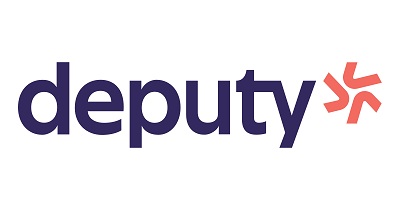Internal communication problems in healthcare continue to prevail at an alarming scale. Poor communication in healthcare results in poor patient outcomes: up to 57% of reported miscommunication cases are reported to be among healthcare providers themselves.
Miscommunication in healthcare may lead to avoidable health complications; unnecessary deaths may also occur, and malpractice and negligence procedures might follow. This means that patients end up suffering the most.
Communication is a crucial element in the delivery of proper care to patients. An effective communication strategy is vital for the development of great patient experiences.
This article will highlight common areas where internal communication problems occur, and provide possible solutions.
Miscommunication during shift changes
Communication breakdowns in health care are common during shift changes. Shift changes involve the handover of health care duties from one nurse or doctor to another – this transfer of health care responsibilities also involves the transfer of information.
It is during this process that miscommunication usually occurs, or important patient information gets left out. How can complete information be successfully communicated during a hand-off? This is a common question in most healthcare institutions.
An effective handoff should contain detailed and exhaustive patient details, as this provides enough information for patient care to the next caretaker. A failure to communicate all the patient details can be detrimental to patients. Cases have been reported in which patients are given the wrong medication due to insufficient information.
At least 80% of medical errors were reported during shift changes. Therefore, healthcare institutions should devise an effective shift handover strategy: for example, this may include a short briefing on admitted patients. Recent shift work statistics indicate that effective communication is one of the top priorities for employees in general, and this is only emphasized more in the high-responsibility context of health care.
Another way to improve communication is electronic data support which will include handoff data as well. This ensures that comprehensive patient information is passed on to the next health care provider during shift changes.
High information volume
The amount of information that is generated from healthcare processes is mostly high in volume. The information comes in at a fast pace, which results in information overload. Information overload is a grave threat to the communication and productivity of healthcare staff. Instead of facilitating effective communication, it impedes passing on the correct information.
Poor communication patterns are often observed when, for example, there is a rapid decline in a patient’s health. Health care assistants or nurses have to pass along the information on the patient’s medical history, vital signs, and medication administered, leading up to the deterioration.
This information is important for the healthcare practitioner, but if presented in an illogical manner vital information may be missed. This often results in the administration of wrong treatment or therapy.
It is also possible that information gets mixed up and is then passed on to the wrong department. Such mistakes can spill over to patient management in the hospital. As a minimum, the overall patient experience in the healthcare facility may be negatively affected; more serious consequences can significantly influence the patient’s health.
To reduce the effects of information overload on communication, healthcare institutions should integrate technical solutions into their system that assist in storing and disseminating information.
Poor communication technology
Healthcare institutions use different communication systems to disseminate important information. Integrating technology in healthcare systems is a step towards efficiency. However, poor technology can cause internal communication problems.
With sub-par tech solutions, information may be passed correctly – but there is no guarantee that the recipient will see it. Poor communication technology is also less secure: any communication through such a system can fall prey to cybersecurity risks.
When that happens, confidential patient information can be violated or lost. This negatively affects the delivery of effective and efficient healthcare. Therefore, there is a need to invest in highly secure communication platforms, as well as in automated communication systems that offer outstanding connectivity. This will facilitate effective communication in healthcare.
An upgrade of communication systems is necessary but costly. As a result, many healthcare institutions fail to obtain new infrastructure. The inability to purchase effective communication solutions perpetuates internal communication problems.
Poor collaboration between healthcare departments
To improve health care for patients, staff from different departments may collaborate on certain procedures. These health care collaborative efforts need good planning, coordination, and management. A failure to manage these collaborations results in miscommunication problems.
Therefore, any collaborative efforts between departments need effective leadership and planning. Policies and procedures should be laid out for healthcare providers to follow during collaboration. Communication problems in collaborations between healthcare departments can be detrimental to the health of patients.
Power differentials
Poor communication patterns may also exist between healthcare staff in different positions of power. For example, a healthcare assistant may be hesitant to speak up to the head healthcare practitioner on any workplace issues. The fear comes from the culture of organizational hierarchies that are present in all institutions.
This hierarchy of power makes it difficult for junior-level healthcare workers to air out concerns, or recommend solutions that are beneficial to the bottom line of healthcare. As a result, there will be a breakdown of communication.
To solve this problem, it is important to run team-building workshops that consist of healthcare staff from all organizational levels. These workshops will encourage interaction between all healthcare staff. Following these interactions, trust is built and fear is diminished. In essence, team-building workshops will improve internal communication in healthcare.
Key takeaways
Internal communication problems spill over to healthcare solutions. This affects the overall patient experience. Healthcare institutions should prepare effective communication strategies. For correct implementation, an investment in communication system infrastructure is vital. These systems must be integrated with other healthcare technology.
Healthcare institutions are encouraged to go paperless in their management practices to improve their communication. In fact, cloud-based communication is more effective because it uses a central database. Overall, healthcare leaders must consistently monitor the internal communication structures of these institutions, to ensure that internal communication problems are detected early.


















